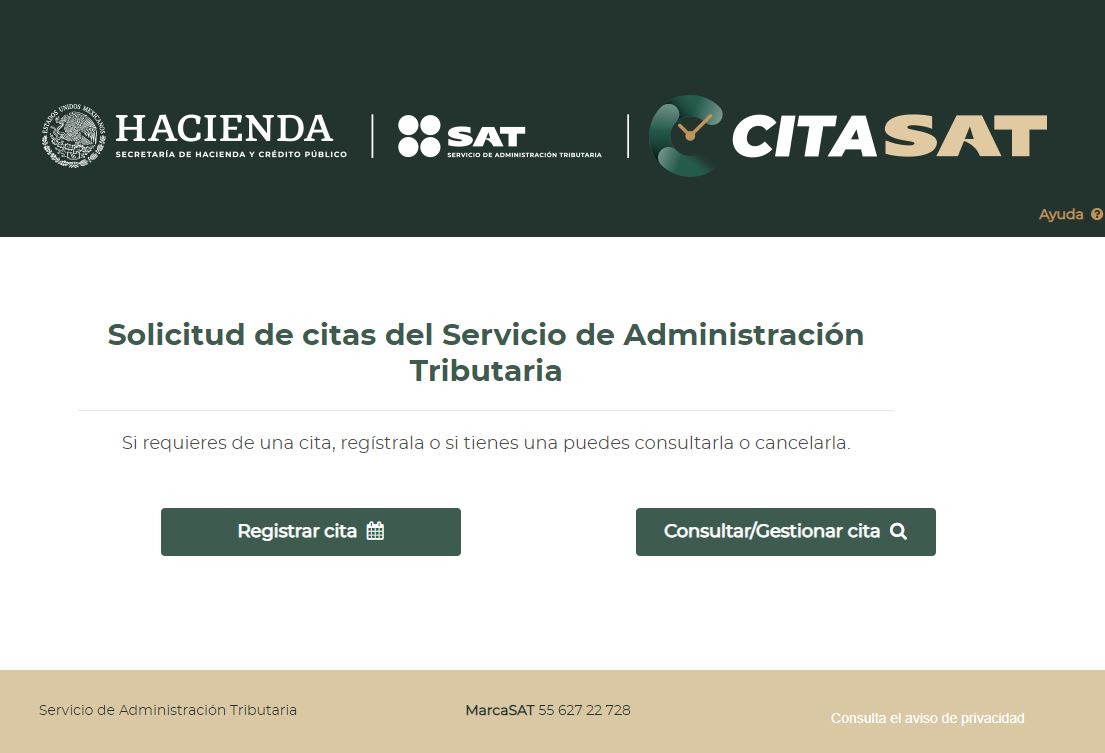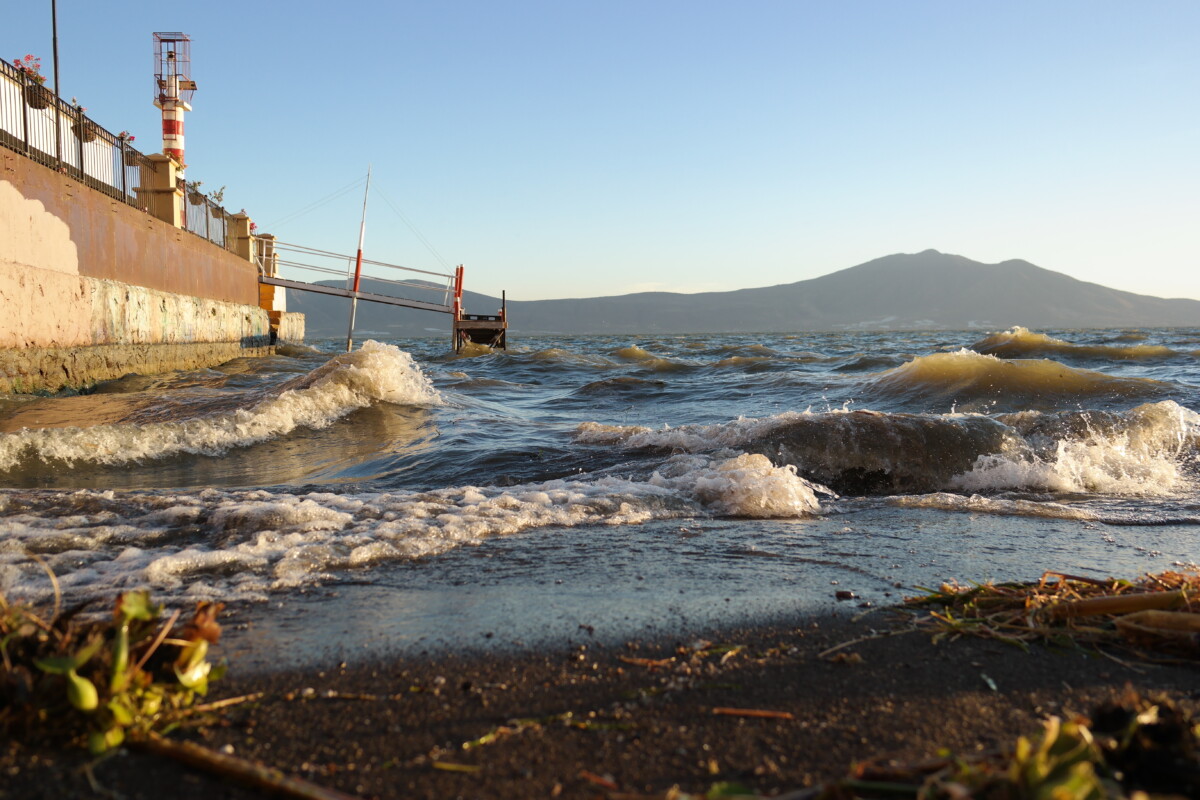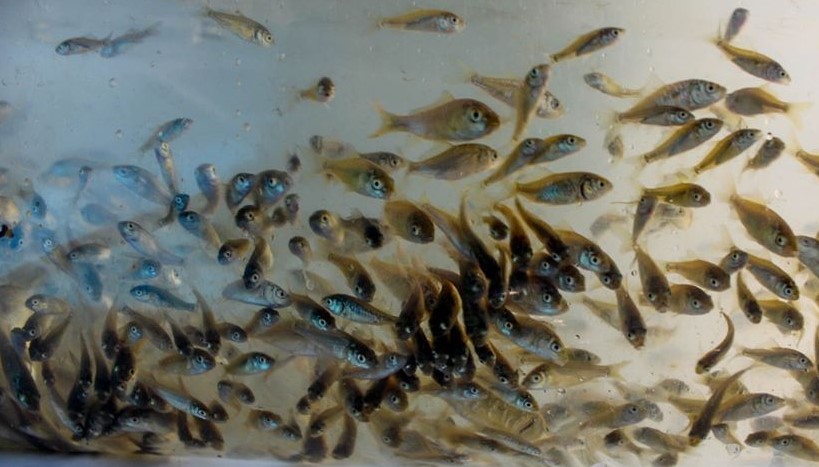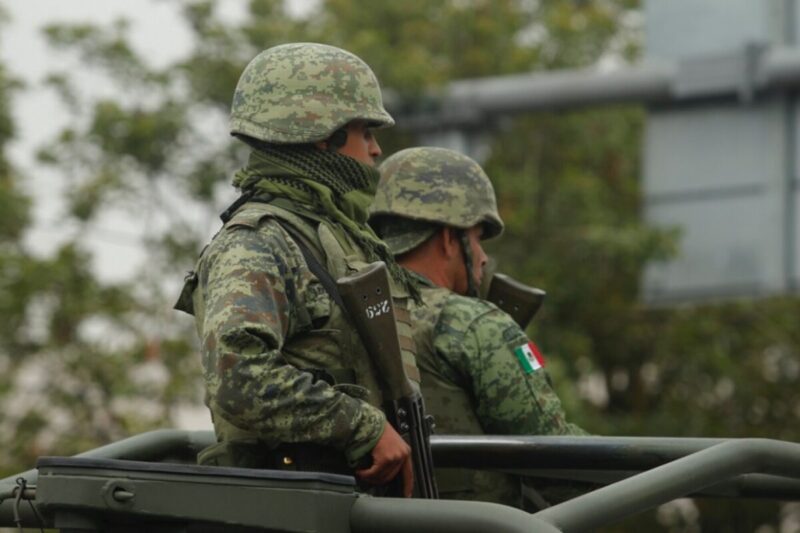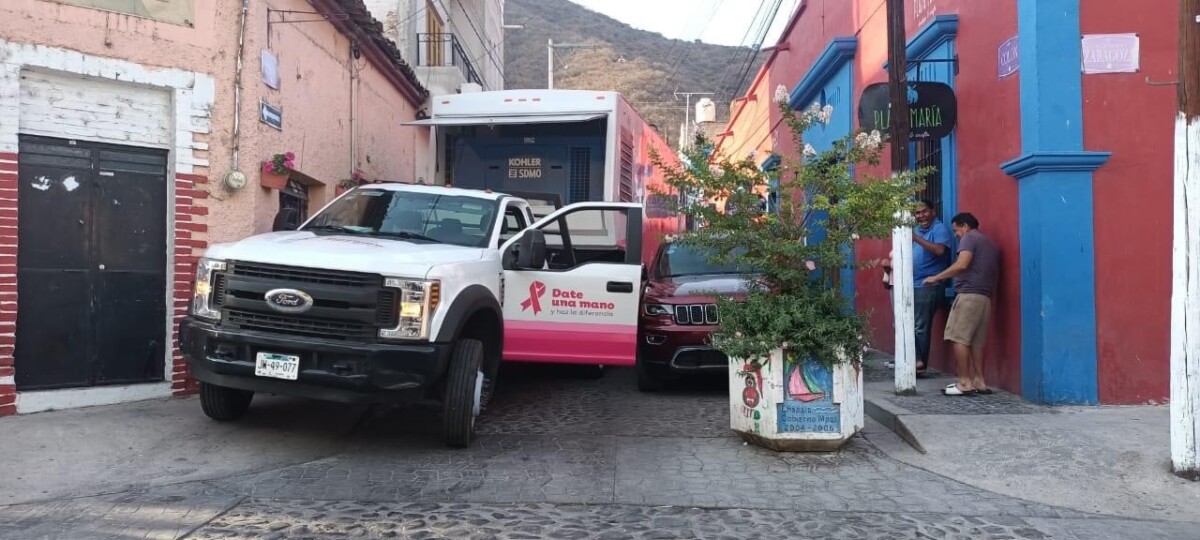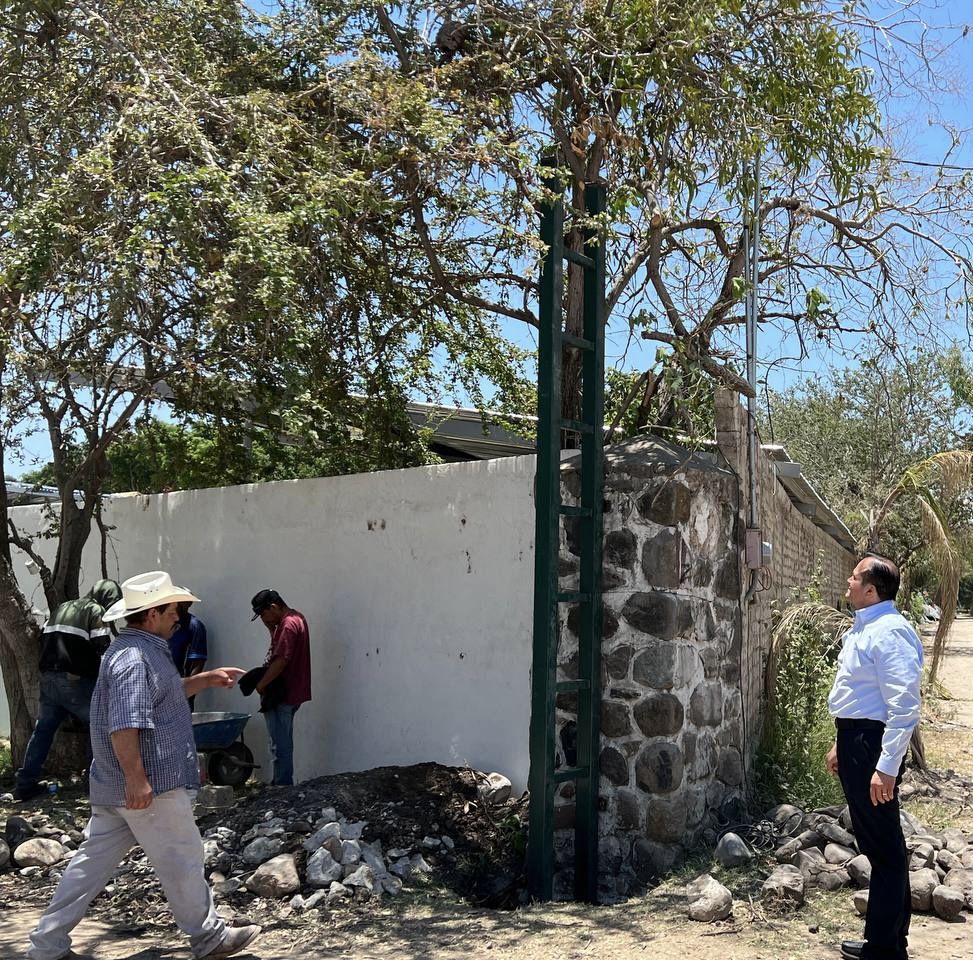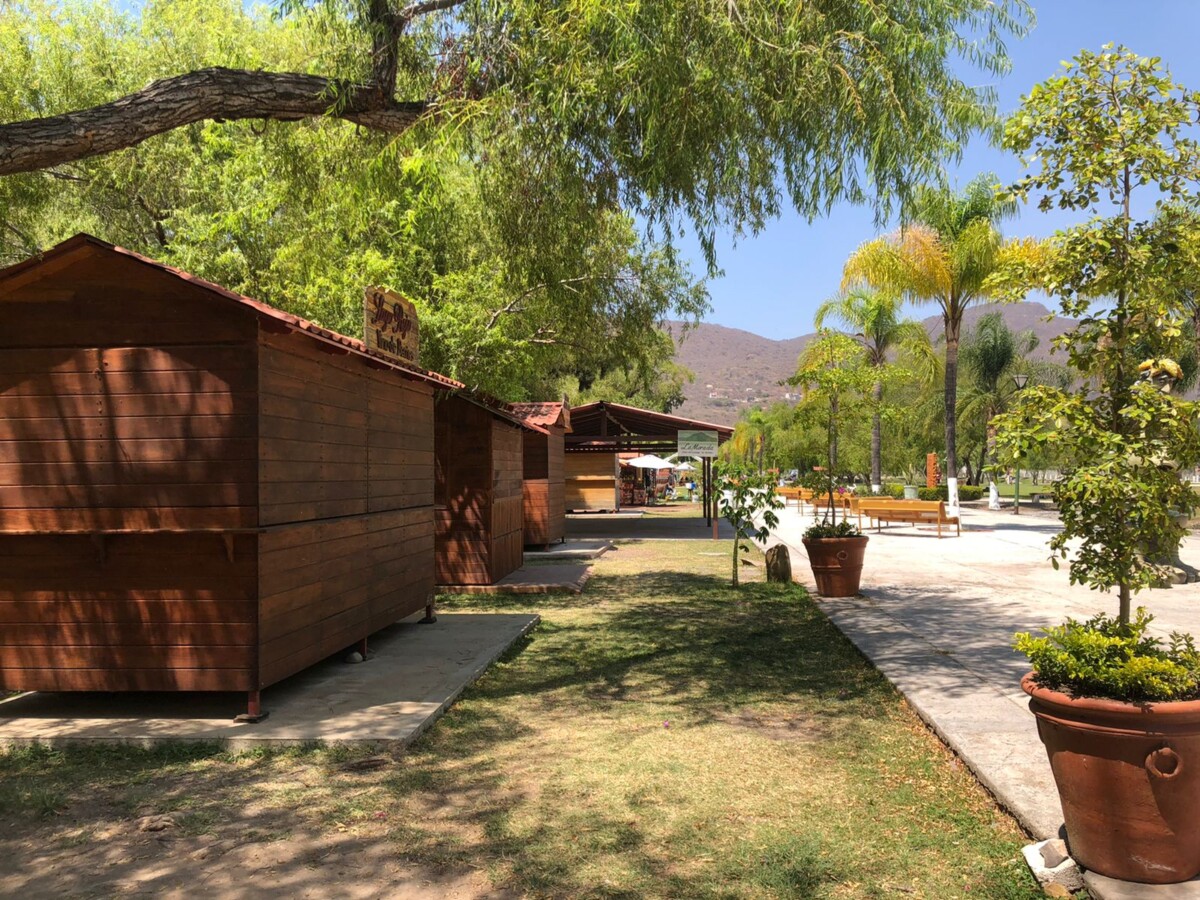noticias
Lakeside Chronicles
The Christ buried among the dust of the years carried in the cendal with a paper in which was inscribed «El Señor de la Esperanza» (The Lord of Hope).
The bloody arm and half of the face was the only thing that could be seen of the crucified figure. He was buried in the middle of the old floorless cellar in the temple of San Cristobal Zapotitlán. A mound of ant dirt and dust accumulated over the years covered the figure.
A yellowed piece of paper that fell when the cloth was removed said «Señor de la Esperanza» (Lord of Hope). The cloth was also stained and when touched it broke into pieces. The rickety cross was a pale green color; the Christ figure was complete.
Ruben Solano Gonzalez had dreamed of that Christ without knowing him. He pointed to him precisely, when he went to the temple in search of that crucified one who in his dreams was asking to be taken out of there. Ruben was sick, but his insistent words said that behind the altar was the one who asked him to come out into the light. He had looked for the sisters of the Magdalena Sofia house, he had told his father; it was the sacristan Genaro Reyes Gallardo who took him to him.
-That’s him,» he told him.
A few months later, Ruben died.
-If you want to leave, no one will say anything,» said Genaro to the Christ who was waiting under that sheet of dust, while with the help of a couple of children he undertook the rescue.
Then he placed him in the baptistery; when the nuns saw him, they only asked where the Christ had come from. The priest also gave his approval. That was about 40 years ago.
Genaro became very fond of him, and received miracles from the Christ. Even when he retired for a while from his work in the church, he thought of him with religious fervor.

The faithful accompanied the procession with prayers and chants, accompanied by a mariachi.
Upon his return to the village, Genaro found that the priest on duty had baptized him as «Dulce nombre de Jesús» (Sweet name of Jesus). And having performed a miracle on him, the parish priest organized a triduum, 3-days of prayer to honor him. Over the years, the triduum became a novena (a 9-day prayer celebration), and every second Sunday of May the bells tolled in his honor and a mass was celebrated.
In 2022, almost four decades after that discovery, the Señor de la Esperanza receives the honors and fervor of the parishioners, although with a different name.
At 5:00am the first rocket in his honor goes off. The faithful, mostly women, make their way through the cobblestone streets, some carrying a candle. The musicians of the town begin to arrive at the meeting point, today it is to the east.
One of the women in charge of the day walks in front of the procession carrying a one meter high Christ. There are only 25 of us walking towards the temple accompanied by the music.
When they arrive at the church, they are greeted by the ringing of bells and another barrage of rockets.
The Señor de la Esperanza is now dressed in a brown cloth with the chalice and the Holy Shroud in the center, in the middle of a light blue; two days of hard work took the Jocotepec worker, Don Pedro Mendoza Navarro, to weave each thread of wool to give the crucified the premiere on his day.

One of the streets decorated with colored sawdust.
The voice of a woman stands out and others second her in the final chant, which with difficulty reaches the end because several can be heard coughing; the last minutes are a concert of coughs, which are compensated by the hot cinnamon and the pieces of bread offered at the end by those in charge of the day.
For the procession, the Señor de la Esperanza is adorned with a blaze of golden rays and placed on the platform of a pickup truck. At his side is again Genaro Reyes, who has decorated the mobile altar with white and yellow chrysanthemums for its travels through the main streets of the town, leaving faces dazzled with fervor.
Today he is accompanied by the faithful armed with their flowered and multicolored parasols, as well as with mariachi, the band, and the dancers who honor him.
Upon arrival, the eyes of the faithful are absorbed in the battered face of Christ, the countenance of a woman who is in front seems to be transfigured and the crucified seems not to want to enter when a group of about five men with difficulty enter the temple with the statue on their backs.
-Long live the sweet name of Jesus! shouts a woman’s voice.
-Long live the Lord of Hope! shouts another.
-I think he wanted to get out, because I was able to do it with the help of two children. And now they can’t,» says Genaro.
It is said that many priests who have visited the parish have been very struck by his face, by its realistic deathly appearance; by the deep pain in its half-open eyes and the drama of its fainting body.
They say that according to a restorer who came to see it, the figure was carved by hand in hollow wood, that its fleshy side is covered by a fine paint and the teeth that can be seen through its half-open lips are made of ivory.
Now it is before the eyes of all that Christ who waited for who knows how many years in oblivion, carrying his name girded on the cloth, waiting perhaps for the voices invoking his name.
“Long live the Lord of Hope!”
Translated by Kerry Watson
Do you have an RFC number? You will need one by July 1 if you live in México full or part-time
Appointment site of SAT for RFC cards.
Patrick O’Heffernan and Catherine-Claire Blythe. Do you have RFC number? Do you know if you do? Do you know what it is and that you need one? If the answer was no to any of there questions, read on.
The 2022 Tax Reform law passed by México now requires all citizens and legal residents (Permanente or Temporal) to have a Registro Federal de Contribuyentes (English: Federal taxpayer registration), known simply as an RFC number.
Plus, if you do business in México– even if you are only a customer of CFE or the water company or an internet provider – you need to fill out a form Constancia de Situación Fiscal (English: Proof of Fiscal/Tax Situation), which companies will soon be asking you for, if they have not already.
The RFC number and the Constancia de Situación Fiscal will be used by the Mexican government to track income and potential money laundering, but they will be used for many other things. Without an RFC number on your CFE bill, you won’t be able to sell your house or buy a car. Without an RFC number you won’t be able to open a bank account, and in some places, sign up for an internet service. So, you can’t blow it off.
This is a NEW REQUIREMENT FOR EVERYONE over the age of 18. who lives in México, full time or part time, whether or not you earn money in México. If you have a Temporal, a Permanente or a CURP, you must get an RFC number. Some people who have been here awhile may have been assigned an RFC number, so you should go online and check if you have one (see video link in the box).
If you don’t have an RFC, you have to actively go through a process to get one. The process is complicated, although you can hire someone to help you. But at some point you will have to personally visit a Mexican tax office so they can obtain biometric information of physiological characteristics like – but not limited to – fingerprints, iris patterns, or facial features.
The process for the Constancia de Situación Fiscal is much simpler and is done completely online, although you can hire someone to help you with it, too.You will need your RFC before filling out the Constancia de Situación Fiscal form.
You get an RFC number by physically showing up at an office of the Mexican equivalent of the American IRS, called the Sistema de Administración Tributaria (English: Tax Administration System), known by its initials, SAT. You must go in person, with your documents, so they can obtain your biometric information. And you have to do it by July 1,o 2022.
The nearest SAT office to Lakeside is in Guadalajara at Calz. Lázaro Cárdenas 2305, Las Torres, Guadalajara 44920.
For an RFC, you must get an appointment, which you can do online at http://citas.sat.gob.mx. You will need your CURP number (if you don’t know your CURP number, see below). Follow the steps on the site for a personal RFC (not a business RFC). If you don’t speak Spanish, use Google Translate to convert it to English or have a bi-lingual friend help you.
Fill in your info, follow the steps which will bring you to a calendar to use to schedule an appointment, but you will likely see a notice telling you there are no appointments available. If so, enter your email address to be put into a “virtual line” for the next available appointment. You will get an email confirming that you are in the virtual line and to monitor your email for your date. If you actually can make an appointment, take it because it may go away in a few seconds as thousands of people are trying to get them.
For the Constancia de Situación Fiscal, you can complete the process online, but you must have a RFC number first to fill out the Constancia de Situación Fiscal. Note that the Spanish word «Constancia» simply means “proof” in Spanish and there are other documents with the word «Constancia» on them . You need a document whose full title is Constancia de Situación Fiscal. You can go to satid.sat.gob.mx and fill out the correct form.
As this is a new process and involves taxes, whether or not you pay them in México, it might be helpful to check with an attorney or accountant who is familiar with Mexican tax law and the new RFC process.
While it may be convenient to use online translation to fill in the forms in English, SAT has not clarified if this is acceptable and a safer course may be to get help filling in the forms in Spanish until SAT clarifies this. Since the form for the Constancia de Situación Fiscal requires that you video yourself repeating some information in Spanish, you might want to get coaching in proper pronunciation.
Additionally, the Mexican government has not addressed a number of questions, such as a requirement for those with existing RFC umbers to update them with biometrics, or “snowbirds” with Temporals currently out of the country , an attorney or accountant can help you keep abreast of changes and new requirements.
For this story, Catherine-Claire Bly compiled the information for a Facebook post and Patrick O’Heffernan organized it in Semanario Laguna news style
(Sidebar box)
Videos to help you through the RFC process.
While this is all very complicated, there is help online in the form of videos by Qroo Paul of Two Expats in Mexico. Here ae the relevant videos:
RFC number explained and why you need one.
https://www.youtube.com/watch?v=D7_bMe2LUYU
How to find out if you I already have a valid, current RFC.
https://www.youtube.com/watch?v=0B9kUK37lQA
Making an appointment with SAT for an RFC, and paperwork/items to take with you.
https://www.youtube.com/watch?v=D7_bMe2LUYU
Step-by-step instructions on how to obtain a «Constancia de Situación Fiscal» online.
https://www.youtube.com/watch?v=eh2li1L6mA8
Finding your CURP alpha/number if you don’t know it.
Alfaro rules out construction of second Chapala-Guadalajara aqueduct
View of Lake Chapala from the shore of the beach next to the Ajijic dock. Photo: Archive.
Editorial Staff. Jalisco Governor Enrique Alfaro Ramírez ruled out the construction of a second aqueduct to supply the Guadalajara Metropolitan Area (AMG) during his term of office.
«This was my campaign commitment and I stand by it. We are not going to take one more liter from Chapala. We cannot drain the lake to solve the city’s supply problem. That commitment continues. We are not going to build a new aqueduct, but we are going to continue with the maintenance works of the old system,» said the state president.
He made this statement after academics from the Universidad de Panamericana (UP) urged state authorities to inquire about the need to build a new aqueduct to draw water from Lake Chapala.
The governor of Jalisco dismissed this observation by declaring that no more water can be taken from Mexico’s largest lake. The specialist in water technologies, Daniel Sánchez Tapetillo, replied that the second aqueduct would have the function of substituting for the first one in case it failed.
«The second aqueduct is not to take more water from the lake than the Guadalajara Metropolitan Area already has a concession for. To believe that is a mistake. We have a concession of 236.5 million cubic meters a year, that is, 7.5 cubic meters per second. The two aqueducts could never operate simultaneously.»
The specialist assured that, after 30 years of age, the maintenance of the first aqueduct is urgent, because in the event of a failure, 60 percent of the water needed would no longer be supplied. In his opinion the useful life of the current system has already been exceeded.
Sanchez Tapetillo said he regretted that the governor did not listen to the proposals of academics from the University of Guadalajara (UdeG), the Pan-American University (UP) or the Technological Institute of Superior Studies of the West (ITESO), since they are institutions that for years have reviewed the issue and their contributions are to act in time and prevent more than 60 percent of citizens of Guadalajara from running out of water.
Translated by Nita Rudy
New SIMAPA administrator appointed in San Nicolás de Ibarra
Juan Antonio Vázquez Ayala is the new water administrator in San Nicolás de Ibarra.
Jazmín Stengel (Chapala).- The petitions have been heard. Juan Antonio Vázquez Ayala was appointed as the new administrator of the Municipal Water and Sewage System (SIMAPA) in the delegation of San Nicolás de Ibarra, Chapala, at the insistence of the inhabitants.
During the meeting held on April 25 with the municipal president Alejandro de Jesús Aguirre Curiel and a committee of officials, the inhabitants of the town requested the replacement of Santiago García as administrator of SIMAPA and of the spokesperson Ricardo Razo, due to alleged mismanagement of the water and its wells, as well as the making of decisions without consulting the people.
Although the petition issued during the meeting by the villagers wanted Luis Morales Contreras and Irma Reyes Delgado included as part of SIMAPA’s municipal council, other people received the appointments.
Vázquez Ayala was appointed as the new water administrator in San Nicolás de Ibarra and will oversee the documentation, organization, procedures, complaints and recommendations that the population has before SIMAPA. In other words, he will act as an intermediary between the demands of the delegation and the central offices of the municipality.
The appointment of the new spokesperson, who will represent the population in the SIMAPA Council, has not yet been approved. However, the neighborhood committee will decide the new person in charge through a general meeting with the people, stated Vazquez Ayala, who took the opportunity to thank the mayor for his participation and the people for giving him their trust.
Translated by Sandy Britton
Siembran 150 mil crías de tilapia en el Lago de Chapala
Alevines de tilapia en una bolsa de plástico antes de ser liberados. Foto: Archivo.
Redacción. – Como parte del compromiso de la Centro Acuícola Tizapán, integran la primera entrega de parte de la Secretaría de Agricultura y Desarrollo Rural (SADER) Jalisco de donar 500 mil crías de peces para reactivar la actividad pesquera en el lago de Chapala, se entregó el primer lote con 150 mil unidades de tilapia en el Malecón de Jamay.
Durante el evento, la titular de SADER Jalisco, Ana Lucía Camacho Sevilla, observó que esta entrega proviene del Centro Acuícola Tizapán y surge a raíz de la preocupación de los pescadores de Jamay por la disminución en la captura de tilapia, de la cual depende su actividad productiva: “Es la primera parte del compromiso que hicimos”.
Luego de recordar que la Asamblea General de las Naciones Unidas declaró 2022 como el Año de la Pesca y la Acuicultura Artesanales, reconoció el trabajo de quienes se dedican a este oficio. “Por eso vamos a seguir reforzando su labor con crías de peces y con equipamiento para que realicen sus actividades de manera más oportuna”.
El presidente municipal de Jamay, César Celestino Molina Sahagún, comentó que esta entrega es la respuesta de un compromiso de la secretaria, Ana Lucía Camacho Sevilla: “Ella escuchó las necesidades de los pescadores y poco después la tenemos aquí. Esto se agradece y se le reconoce”, no sin recalcar la importancia de fortalecer al sector con el repoblamiento de peces y equipamiento.
María Refugio Hernández, en representación de las cooperativas pesqueras y fileteadoras, agradeció a las autoridades por el apoyo. “Será un impacto fuerte para nosotros. Hasta ahora, con esta administración del Gobierno Estatal, vemos resultados. Estos proyectos serán un bien para todos y mejorará el ingreso para nuestras familias”.
Para saber:
Jamay y Poncitlán son los municipios que cuentan con más organizaciones pesqueras, con 15 cada uno. Chapala y Ocotlán tienen ocho cooperativas, Tizapán seis, Tuxcueca cinco y Jocotepec tiene cuatro agrupaciones de pescadores.
Fuente: https://www.jalisco.gob.mx/es/prensa/noticias/143406
Vigilan Jalisco más de 12 mil elementos federales
Seis mil 410 son efectivos del Ejército y la Fuerza Aérea, cinco mil 512 son integrantes de la Guardia Nacional. Foto ilustrativa: Quadratín.
Redacción.- El Presidente de la República, Andrés Manuel López Obrador (AMLO), informó el pasado 13 de mayo que, debido a los recientes hechos violentos en distintos municipios, hay más de 12 mil elementos federales.
Tras la ola de violencia ocurrida en algunos municipios de Jalisco como Jocotepec, Tamazula, La Manzanilla de Paz, Mazamitla y Puerto Vallarta, 12 mil 362 elementos militares y de la Guardia Nacional vigilan el estado.
Seis mil 410 son efectivos del Ejército y la Fuerza Aérea, cinco mil 512 son integrantes de la Guardia Nacional y otros 440 provienen de la Secretaría de Marina “para garantizar la paz y la tranquilidad de los habitantes del Estado», declaró AMLO en la reunión sostenida en Zapotlanejo.
Mammogram truck gets stuck entering Ajijic
A planter had to be moved with a crane to allow the truck to pass.
After unsuccessful maneuvering attempts and wanting to move the other truck, the operators decided to call a crane to move a planter so that the pickup, whose owner was not present, could be moved and the mammogram unit could get out of the situation.
Translated by Paul Weeks
Park in Riberas del Pilar being rehabilitated
The mayor of Chapala, Alejandro de Jesús Aguirre Curiel, during the inspection of the rehabilitation of the Riberas del Pilar park entrance.
Editor.– The municipal government of Chapala is continuing with the rehabilitation of public spaces in the city and the municipality’s surrounding towns. According to the municipal president, Alejandro de Jesús Aguirre Curiel, one of the locations receiving attention is Riberas del Pilar Park. The park is one of the most emblematic places of Riberas, with the two stone pillars supporting the neighborhood name.
«The Recovery of Public Spaces program continues throughout the municipality. Soon the public will be able once more to enjoy the Riberas del Pilar Park,» City Hall announced on social media.
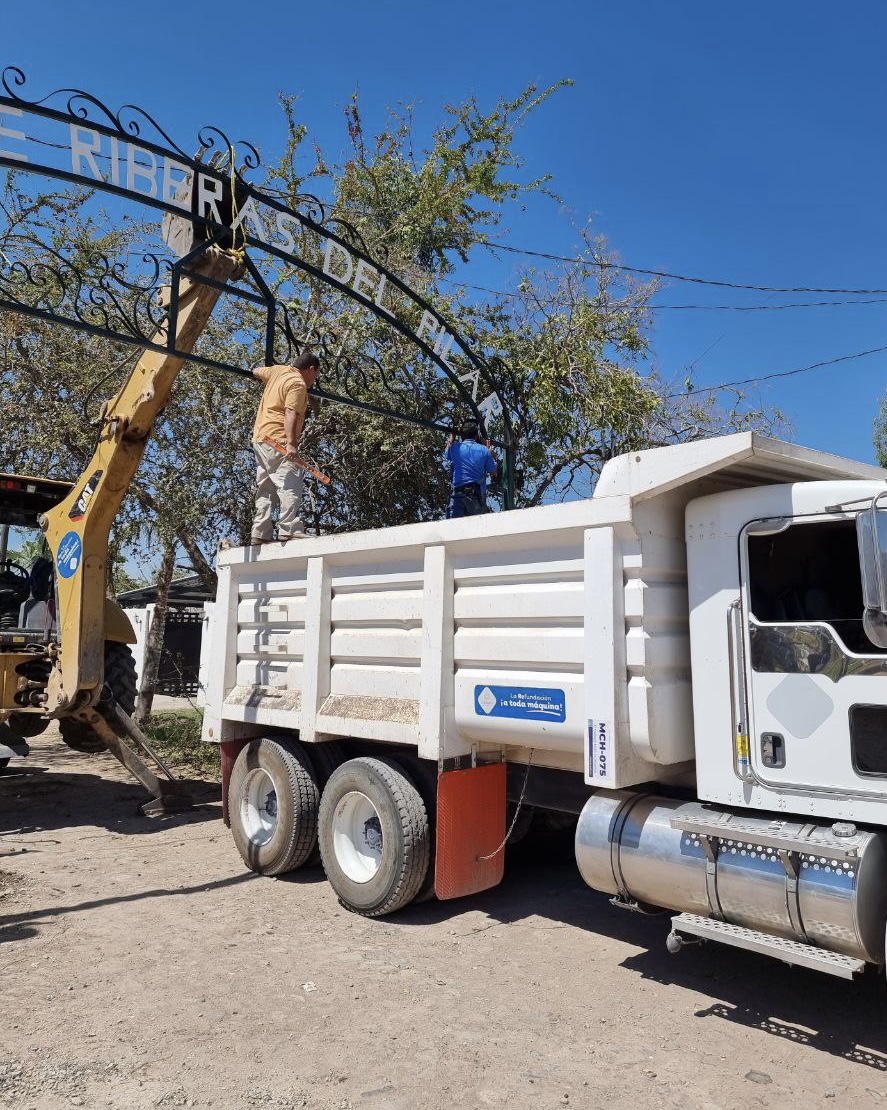
Workers of the Municipality of Chapala start with the rehabilitation of the Riberas del Pilar Park.
«The recovery of public spaces is being carried out with the objective that families will be able to enjoy public spaces worthy of our municipality and its people,» the director of Social Communication informed Seminario Laguna.
In addition to the iconic pillars, the sign for the park also received a freshening up.
Translated by Rebecca Zittle
PHOTONOTE:
Héctor Ruiz Mejía (Jocotepec).– Despite some of the Jocotepec boardwalk merchants reporting low sales during the Holy Week and Easter holiday season compared to last year, Víctor Loza Ornelas, Director of Tourism and Artisan Promotion, confirmed that the holiday period brought approximately $1.8M (about US$90,000) to the local community, saying » it’s a very good number.»
Translated by Amy Esperanto
Runners from Ajijic stand out in national competition
From left to right Filiberto Pérez Vega, Nadia Vega and José González Valenzuela. Photo: Sofía Medeles
Sofía Medeles (Ajijic).- Three Ajijic runners from the «Team Jou,» mountain runners shined in the competition «Ultra Cerro Rojo» in Tlatlauquitepec, Puebla, which took place on April 30.
They are José «Jou» Valenzuela, Filiberto Pérez Vega and Nadia Vega, who ran in the free category, covering different distances: Jou competed in the 50 km race, reaching ninth place, Nadia in the 15 km race, achieving sixth place and Filiberto in the 30 km race, positioning himself in fifteenth place.
Both Filiberto and José said they were happy with the experience, even though they described it as a «hard» race. For Nadia, this competition is the second in which she has participated outside of Jalisco. She shared that she found it incredible to go out and see these places that she described as beautiful.
«Because of my injury, the race was a little difficult for me, but I finished it out of pride. On the route, organizers supported me and gave me a pill for the pain to keep me going. Although I did not reach the goal I had set for myself and felt frustrated, it motivates me to continue and to do better in the next races,» said Jou Valenzuela.
The three mountain marathoners agreed that they will continue running in races outside of their hometown, and that they feel very motivated – as well as grateful – for the support that the people of Ajijic have given them.
When asked about how runners are selected to represent «Team Jou» in this type of race, Valenzuela said that they are chosen for «the commitment» they put into their training.
He also invited anyone who wants to be part of his team to contact him through his Facebook page, «Jou Valenzuela» so that he can provide them with information about the group.
Translated by Rebecca Zittle
© 2016. Todos los derechos reservados. Semanario de la Ribera de Chapala

